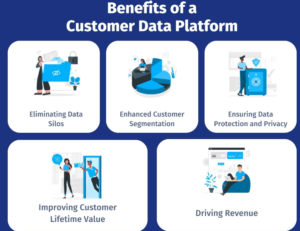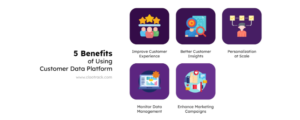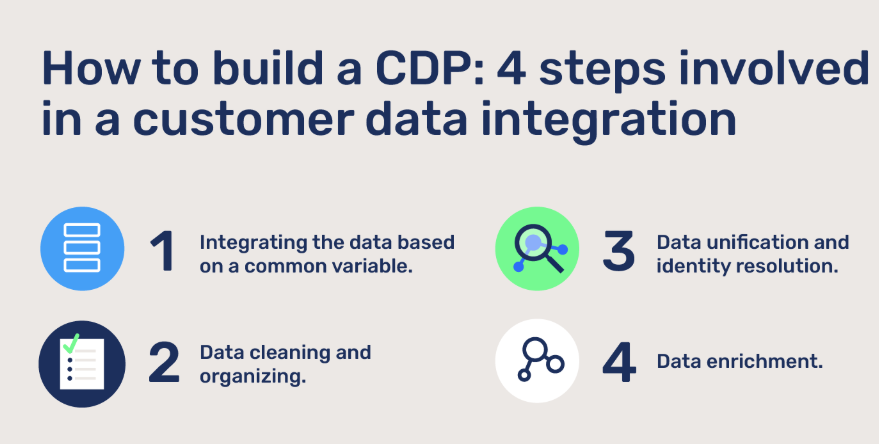So, what exactly is CDP integration? It’s the process of connecting your CDP with various software and tools that are crucial to your business, allowing data and insights to flow smoothly across the organization. By doing this, businesses can use the rich data stored in the CDP to enhance decision-making, optimize marketing, and improve customer experience—ultimately driving growth.
Contents
- 1 Why CDP Integration is Crucial for Business Success
- 1.1 Benefits of CDP Integration
- 1.2 Key Features of CDP Integration
- 1.3 How CDP Integration Enhances Customer Experience
- 1.4 Best Practices for Implementing CDP Integration
- 1.5 Selecting the Right CDP Integration Solution
- 1.6 Overcoming Challenges in CDP Integration
- 1.7 Real-Life Case Studies of CDP Integration
- 1.8 The Future of CDP Integration
Why CDP Integration is Crucial for Business Success

CDP Integration
In a world where personalized customer experiences are paramount, having effective access to customer data isn’t just helpful—it’s essential. Companies that neglect to integrate their CDP with other systems risk missing out on valuable opportunities to understand their customers, provide tailored experiences, and stay competitive.
Integrating your CDP with key business systems can offer a host of benefits, from streamlining workflows to enabling smarter decisions based on data. When your CDP is fully integrated with the rest of your business applications, you can boost efficiency and performance at every level.
Benefits of CDP Integration

Benefits of CDP Integration
- Unified Customer View: With integration, customer data from all touchpoints is brought together, giving you a holistic, 360-degree view of each customer. This allows for more personalized interactions and data-driven decision-making.
- Improved Marketing Efficiency: When your CDP works seamlessly with marketing tools, you can use the insights it provides to create hyper-targeted campaigns. This leads to higher engagement and better ROI.
- Enhanced Customer Experience: CDP integration helps you offer consistent, personalized experiences across multiple channels. By having access to up-to-date customer data, you can anticipate needs and deliver what customers want, when they want it.
- Streamlined Workflows: By connecting your CDP to systems like CRM and e-commerce platforms, manual tasks are automated, reducing errors and boosting operational efficiency.
- Data-Driven Decision-Making: A connected CDP lets you make informed decisions based on a single, integrated source of truth about your customers, which is crucial for business growth.
- Increased Agility: The ability to quickly adapt to changing market conditions is another benefit of CDP integration. With integrated data, your business can react faster and stay ahead of trends.
Key Features of CDP Integration

Key Features of CDP Integration
- Data Ingestion and Unification: A key part of CDP integration is the ability to bring together customer data from multiple sources—whether online, offline, or from third-party vendors.
- Real-Time Data Syncing: Integration ensures that customer data is always up-to-date, allowing teams to have a current and accurate view at all times.
- Audience Segmentation: A connected CDP lets you segment customers based on their behavior, demographics, and preferences. This means you can target groups more precisely.
- Personalization: Integration with tools that optimize personalization allows businesses to deliver tailored content, offers, and experiences to individual customers.
- Analytics and Reporting: With integrated systems, businesses can track marketing performance, customer interactions, and more—allowing them to fine-tune strategies based on solid insights.
- Scalability and Flexibility: The best CDP integrations scale with your business, adapting to new data sources and customer needs as your business grows.
How CDP Integration Enhances Customer Experience
The key to an exceptional customer experience is a deep understanding of customer preferences, behavior, and pain points. CDP integration makes this possible by consolidating data from all customer touchpoints. With this wealth of information, businesses can create hyper-personalized experiences, anticipate needs, and respond proactively.
By offering consistent, personalized interactions across every channel—whether it’s email, social media, or customer service—businesses can strengthen relationships and foster loyalty.
Best Practices for Implementing CDP Integration
To make the most of CDP integration, it’s essential to follow some best practices:
- Set Clear Goals: Identify the specific objectives you hope to achieve, such as enhancing marketing efforts or improving customer segmentation.
- Assess Your Current Systems: Understand your existing technology and how it interacts with the CDP. This will help identify where integration can improve operations.
- Focus on Key Integration Points: Start by integrating the systems most critical to your customer-facing operations, such as CRM and marketing platforms.
- Ensure Data Security: As customer data is often sensitive, it’s vital to have strong security measures in place to protect data during the integration process.
- Adopt a Phased Approach: Rather than trying to do everything at once, implement CDP integration gradually. Start with a pilot project and scale from there.
- Foster Collaboration: Involve teams across the organization, from marketing to IT, to ensure the integration aligns with business objectives and addresses the needs of all departments.
- Monitor and Optimize: Keep an eye on the performance of your integrated systems and make adjustments as needed to maximize the value of your customer data.
Selecting the Right CDP Integration Solution
When choosing a CDP integration platform, several factors need to be considered:
- Seamless Integrations: The platform should easily connect with your existing systems, such as CRM and marketing automation tools.
- Scalability: As your business grows, your CDP should be able to handle increasing volumes of customer data.
- Data Governance: Ensure the platform includes strong features for data security and compliance with privacy regulations like GDPR.
- User-Friendliness: Look for a platform that’s easy to use, so teams across your organization can make the most of the integrated data.
- Vendor Reputation: Choose a provider with a solid track record and strong customer support to ensure smooth implementation and ongoing service.
Overcoming Challenges in CDP Integration
While CDP integration offers many benefits, there are also challenges to overcome, such as:
- Data Silos: Merging data from different systems can be difficult, especially if the data is stored in separate silos.
- Data Quality: Ensuring data accuracy and consistency is critical, and poor data quality can undermine the effectiveness of the integration.
- Organizational Alignment: Successful integration requires collaboration across departments, and resistance to change can be a roadblock.
- Privacy Concerns: Navigating privacy regulations can be complex, but it’s necessary to ensure compliance when handling customer data.
By addressing these challenges with a strategic approach, businesses can unlock the full potential of their CDP.
Real-Life Case Studies of CDP Integration
Here are a few examples of how businesses have benefited from CDP integration:
- E-commerce Brand: A retailer integrated its CDP with its e-commerce platform, enabling personalized product recommendations. This led to a 25% increase in conversions and a 15% increase in average order value.
- Financial Services: By integrating its CDP with marketing and CRM systems, a financial company created targeted campaigns based on customer financial goals. This resulted in a 30% improvement in campaign conversions.
- Telecom Provider: A telecom provider integrated its CDP with customer service systems, allowing reps to access detailed customer profiles. This led to a 15% reduction in call times and a 20% increase in customer satisfaction.
The Future of CDP Integration
Looking ahead, CDP integration will continue to evolve with new trends such as:
- AI and Machine Learning: These technologies will enhance personalization and predictive analytics capabilities within CDPs.
- Omnichannel Integration: As more customer interactions take place across multiple touchpoints, CDPs will increasingly integrate with IoT devices, chatbots, and voice assistants.
- Data Privacy: As privacy regulations become more stringent, businesses will need to integrate stronger consent management and privacy controls within their CDPs.
In today’s competitive landscape, CDP integration is more than just a nice-to-have—it’s a business necessity. By integrating your CDP with other business systems, you can unlock the full potential of your customer data, enhance customer experiences, and ultimately, drive sustainable growth.
Categorized in:
